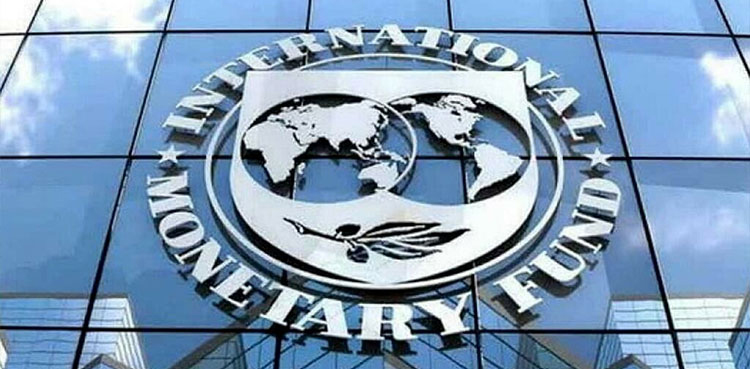IMF is ambivalent about the temporary government proposals

The recommendations of the interim government to lower industrial energy prices, pay off more than one-fifth of the circular debt, and include the Rs268 billion debt owed by Pakistan International Airline (PIA) in the public debt were not immediately approved by the International Monetary Fund (IMF) on Monday.
According to official sources, the IMF also questioned why the interim administration is acting quickly when the Election Commission of Pakistan (ECP) has already prohibited it from moving forward with the privatization of PIA.
The international lender requested further information regarding the three main plans’ legal and economic soundness. The two virtual meetings that the IMF conducted back-to-back fell short of what the Pakistani authorities had hoped for.
Following the provision of further information by the Pakistani authorities and an internal evaluation by the global lender, the next round of discussions regarding these suggestions will be held.
The three ideas were neither approved nor rejected by the IMF. These two discussions yielded the conclusion that, once an elected government assumes power, the IMF would give them more careful consideration.
Prior to taking office, the caretaker administration is eager to put the three recommendations into action.
Three days before today’s national elections, which are supposed to take place on Thursday, the discussions were held at the request of Pakistani authorities.
On Sunday, the ECP questioned the interim government’s legal authority and forbade it from bringing any matters pertaining to the PIA privatization before the federal cabinet.
When asked about the IMF’s reaction to the plans, Ministry of Finance spokesman Qamar Abbasi remained silent and asked for additional details. Esther Perez, the resident representative of the IMF, likewise did not respond.
According to the sources, the IMF’s primary concern with the PIA’s planned debt settlement plan was the need for the debt to be recorded on the government’s books as soon as possible. The government intended to take the Rs268 billion on its books before the business was ready for privatization, arguing that future earnings would be available to pay off the obligations.
The IMF sought more information regarding the estimated date of the PIA privatization and any minimum reserve price that financial advisors had already determined. According to the sources, the IMF was asking why the debt wasn’t settled by waiting for the proceeds of the PIA privatization.
According to the sources, there was also a question over how the Pakistan State Oil (PSO), the Federal Board of Revenue (FBR), and the Civil Aviation Authority (CAA) would handle the PIA’s debt to them.
The agreement between the federal government and commercial banks about the debt restructuring of Rs. 268 billion was communicated to the IMF. The idea to restructure the debt worth Rs268 billion was approved by both the government and commercial banks.
According to the agreement, the government will pay principal using the money from the PIA sale, using the budget as a backup source if necessary. In exchange, banks agree to take on a 10-year debt rollover with an annual interest rate of 12%, or payments of Rs 32.2 billion in interest annually.
Because of this arrangement, banks will get interest payments of Rs322 billion over the course of ten years, which is more than their outstanding stock of Rs268 billion. In ten years, the entire amount paid to banks at a 12% interest rate will be Rs572 billion.
The airline has a total outstanding debt of Rs825 billion. In order to file a scheme of arrangement with the Securities and Exchange Commission of Pakistan (SECP), the privatization ministry and the PIA must request no objection certifications from the FBR and the CAA.
The PIA owes the CAA Rs. 120 billion. The PIA must reimburse the FBR for Rs. 19 billion.
Tariff Scheme
According to the sources, the government’s plan to lower electricity tariffs for the industrial sector starting on April 1 was not approved by the IMF. It was like shifting the weight from one shoulder to another, which is already overworked, for the IMF.
The plan raises the cross-subsidy burden on residential consumers consuming more than 400 units by 41%, or Rs22 billion, but decreases the cross-subsidy burden on the industrial sector by 91%, or Rs222 billion.
The IMF was notified by Pakistani authorities of their intention to lower industrial tariffs by as much as 29% by relieving industrialists of the financial burden of providing subsidies for the bulk of local consumers.
Subsidies for industrial consumers are Rs. 8.61 per unit, while residential consumers who consume more above 400 units are subsidised at Rs. 5.88 per unit.
In order to lessen cross-subsidy for industrial consumers, the energy ministry has proposed fixed charges on all categories of residential consumers. These fixed charges range from Rs. 50 for 50 units of monthly consumption to Rs. 3,000 per month for unprotected residential consumers whose monthly consumption is between one and more than seven hundred units. An overall effective industrial tariff resulting from these modifications would range from 8.5 cents to 11.75 cents per unit.
CD Scheme
In order to gain more clarification on the Rs1.27 trillion circular debt reduction plan, the IMF also made the decision to meet separately with the minister of energy.
The idea to use budget subsidies and government company dividends to decrease the circular debt by Rs1.27 trillion, or 22%, was presented to the global lender.
As of November 2023, the total circular debt in the energy sector is Rs5.725 trillion. This include debt of about Rs3 trillion in the gas sector and Rs 2.7 trillion in the power sector.
The IMF sought clarification on the government’s legal duty to pay the additional Rs745 billion grant in order to pay down the circular debt.
The IMF was informed that the entire procedure could be initiated with a grant of Rs745 billion in only two days. According to the proposal they provided to the SIFC, the actual amount of money that would be returned to the kitty in the form of taxes and profits would be Rs748 billion.
The Rs1.27 trillion circular debt strategy will have a gross impact of Rs902 billion on the budget.
It is suggested to eliminate somewhat more than Rs1 trillion of the circular debt incurred by the gas sector out of the Rs1.27 trillion debt settlement plan. The remaining more than Rs255 billion will be used to reduce the Rs2.7 trillion circular debt owed by the electricity industry.
After it is put into effect, the debt of the gas industry will drop from more than Rs3 trillion to Rs2 trillion. Circular debt for the power sector will decrease to Rs2.5 trillion.

I am a dedicated student currently in my seventh semester, pursuing a degree in International Relations. Alongside my academic pursuits, I am actively engaged in the professional field as a content writer at the Rangeinn website.








